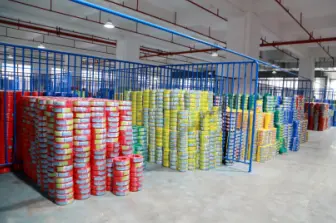What is the Main Difference Between Fire Resistant Cables and Flame Retardant Cables?
1. The structural characteristics of flame retardant cables
The flame retardant cable refers to a cable that can extinguish the residual flame or residual burn by itself within a limited time when its sample is burned under specified test conditions, and after the test fire source is removed, the flame spreads only within a limited range. Structural characteristics of flame retardant cables: the structure of flame retardant cables is basically the same as that of ordinary cables. The difference is that all or part of its insulating layer, sheath, outer sheath and auxiliary materials (banding and filling) are made of flame retardant materials.
2. The structural characteristics of fire resistant cables
The flame resistant cable refers to: under the specified test conditions, the sample is burned in the flame, and the cable can still maintain the performance of normal operation for a certain period of time. Structural characteristics of fire resistant cables: the structure of fire resistant cables is basically the same as that of ordinary cables. The difference is that the fire resistant cable adopts a copper conductor with good fire resistance (the melting point of copper is 1083°C), and a fire resistant layer is added between the conductor and the insulating layer. The fire resistant layer is wrapped by multiple layers of mica tape. Because the allowable working temperature of different mica tapes varies greatly, the key to the electrical fire resistance is the mica tape.
3. The main difference between fire resistant cable and flame retardant cable
Therefore, the main difference between fire resistant cables and flame retardant cables is: fire resistant cables can maintain normal power supply for a period of time when a fire occurs, while flame retardant cables do not have this feature. This characteristic determines that fire resistant cables play an important role in modern cities and industrial buildings. Because once a fire occurs, the power supply circuits of the control, monitoring, guidance, and alarm systems must maintain normal operation. Therefore, fire resistant cables are mainly used in power supply circuits from emergency power to user fire-fighting equipment, fire alarm equipment, ventilation and smoke exhaust equipment, indicator lights, emergency power sockets, and emergency elevators. However, the flame retardant cable may be burnt out and cannot operate in the event of a fire, but it can prevent the spread of the fire, protect other various equipment, and avoid greater losses.
Latest News & Blog
 English
English  français
français  Deutsch
Deutsch  العربية
العربية  tiếng việt
tiếng việt  ไทย
ไทย  čeština
čeština  Indonesia
Indonesia  Eesti
Eesti  български
български  slovenčina
slovenčina 



